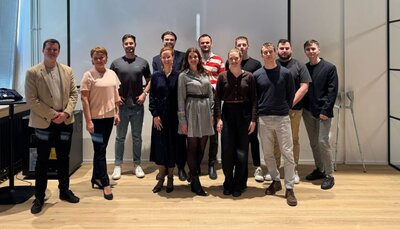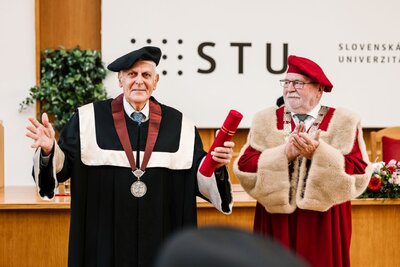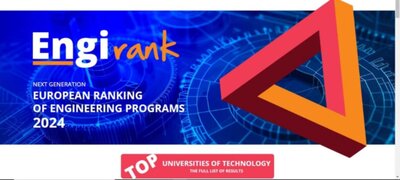

Horizon 2020, Marie Sklodowska – Curie Actions, Individual Fellowships
Expression of Interest for hosting Marie Sklodowska – Curie fellows at Slovak University of Technology in Bratislava
Interested institution:
Department of Building Construction
Faculty of Civil Engineering
Slovak University of Technology in Bratislava (STU)
Radlinskeho 11
810 05 Bratislava
Slovakia
Brief Description of the Institution
Slovak University of Technology in Bratislava is a modern educational and scientific institution. Since its foundation in the year 1937 more than 125.000 students have graduated there. In average, 19.000 students study at the STU every year.
At present, STU consists of seven faculties that provide research in a number of research departments and several centres of excellence following a long-term strategy when the priority areas are biotechnology and biocompatibility; sustainable resources and development: energy and raw materials; sustainable resources and development: environment, landscape and urbanism; nanotechnology, nanosciences and multifunctional intelligent materials; information society technologies; life, health and environment; safety, reliability and quality.
All the STU faculties provide study in accredited study programmes within the complex system of bachelor, master and PhD study. Faculties realise credit system compatible with the European credit transfer system enabling mutual mobility of students within European Union member countries and a larger European space. In the area of scientific and research activities the STU successfully joins European Union programmes (16 H2020 projects).
The Department of Building Construction delivers lectures in building construction, studio design typology, thermodynamics, acoustics, daylighting, and the energy efficiency of buildings. Students are trained in the design of construction units, elements, and details through theoretical and experimental methods of reasoning.
The Department's scientific and research activities rely on an established experimental basis and are aimed at problems of thermal comfort, heat and humidity transfer through the walls and roofs of buildings and their joints, sound transmission in buildings, room and urban acoustics, the theory of dayliqhting and the solar energy of buildings, air infiltration and the effect of driving rain on walls and roofs of buildings and their joints, the total energy effectiveness of buildings, the durability of building materials, and building reconstruction.
Offered areas of research:
- Facilitating the utilization of building performance simulation
- Adaptive facades - requirements, criteria, assessment, computer-aided performance modeling
- Numerical simulation in the protection of monuments and restoration of historic buildingsň
- Computer simulations in the urban scale
Research / Project Description
The Department of Building Construction at the Faculty of Civil Engineering of the Slovak University of Technology in Bratislava, Slovakia, is interested in providing researchers, who wish to apply for Fellowships within MSCA calls between 2017 and 2021, with assistance in the preparation and implementation of research projects in the following areas (they are just indicative – the topics can, of course, be adapted):
1. Facilitating the utilization of building performance simulation
Provided the building physical models are correct, the computer-aided simulation delivers far more precise results than simplified calculation methods. This can be advantageous not only in the advanced design phase, when searching for detailed solutions, but also during the initial design phase, when crucial constructional and technological decisions are made. Though the advantages are obvious, architects and very often other building professionals do not make use of them.
The obstacles, which keep them from using computer simulation methods on a larger scale, usually are:
- The complexity of quality software, e.g. for dynamic computer simulations, which requires advanced computer skills and good knowledge of building physics.
- The amount of time needed to create building physically correct simulation models.
- Over-standardization in terms of too many different standards related to specific building physical problems.
The distance between architects and the software can be made shorter by developing generic models focused on a particular type of building, building component or technical equipment that we want to explore. From conventional models, the generic models differ in that it is possible to operate them from outside, e.g. change calculation parameters, run the simulation and process outputs through a simplified interface designed for the particular type of building, building component or technical device, without the user having to enter into the software, within which the generic models have been developed. Then the non-experienced users are able to perform accurate building performance simulations, as the generic models are based on existing, scientifically proven software. The notion “generic model” is neither fixed nor widely used term. Rather, it is a working description of simulation models designed to allow multiple routine calculations with varying parameters or components and controlled through a simplified tailored-made interface.
2. Adaptive facades - requirements, criteria, assessment, computer-aided performance modeling
Multi-functional and adaptive building facades can provide step-change improvements in the energy efficiency and economic value of new and refurbished buildings, while improving the wellbeing of building occupants. They therefore represent a significant and viable contribution to meeting the EU 2020 targets. Even though scattered, there is a critical mass of knowledge, expertise, resources, and technologies in the fields relevant to adaptive facades. The aim of the work should be creation of a comprehensive overview of the current state of the art in the area of multi-functional and adaptive building envelopes in terms of definition and justification of requirements, criteria and evaluation systems, not only at the level of individual products, but also building units, and the survey of available technologies and methods of computer-aided modeling and simulation. The actual contribution of the work could be:
- Creation of new concepts for adaptive and multifunctional facades and their demonstration using computer-aided simulation and modeling,
- Creation of a generic computer simulation model of one of the types of multifunctional and adaptive envelopes, which could be used for routine calculations, or
- Creation of an evaluation concept for multifunctional and adaptive facades using computer-aided simulations and modeling.
3. Numerical simulation in the protection of monuments and restoration of historic buildings
The computer-aided building performance modeling is rarely used in the area of protection of architectural monuments and restoring historic buildings. The causes are various, e.g. individual and often unprofitable nature of the projects, heavy complications with obtaining realistic input data and the like. Nevertheless, the computer-aided building performance modeling has a great potential, e.g. in the design of ventilation and day-lighting of interior spaces, and the use of modern technologies for heating and cooling as well. The aim of planned work is to map the situation in this area and demonstrate the potential of the computer-aided building performance modeling in the protection of monuments and restoration of historic buildings through the creation of a detailed computer-aided simulation model of selected object or a computer-aided simulation model, which could be used for routine calculations.
4. Computer simulations in the urban scale
Computer simulations of buildings significantly contribute to the understanding of their future performance, help in optimizing the design and thus the energy efficiency of their operations. They can also contribute to the prediction of energy, heat and water consumption in the urban scale, e.g. in case of a sudden change of weather conditions or planned building interventions. The aim of this work is to demonstrate the possibilities of computer simulations in the urban scale by building models characteristic for the settlement, created on the basis of available data on the existing buildings, and using modern statistical methods.
Who can apply?
The potential applicants must meet the conditions set out within Marie-Sklodowska-Curie-Actions Individual Fellowships call at:
https://ec.europa.eu/research/participants/portal/desktop/en/opportunities/h2020/index.html
Contact person
Dr. Roman Rabenseifer
E-Mail: roman.rabenseifer@stuba.sk
Phone: 00421-903-552300
www.svf.stuba.sk/en
Applications: documents to be submitted and deadlines
The implementation of projects relies on external funding, via the H2020 Marie Skłodowska-Curie/Individual Fellowships 2017 scheme, to be applied for. This is a competitive scheme, and success depends on the candidate’s profile and quality of his/her project. The candidates wishing to elaborate a project proposal in any of the above areas should contact Dr. Roman Rabenseifer (roman.rabenseifer@stuba.sk) for a preliminary discussion. Project details, both in actual content and in methodological approach will be determined and will be fine-tuned and optimised, depending on the applicant background and skills.
Please note that:
Deadline of the next call for proposals for Marie Sklodowska – Curie Individual Fellowships is September, 12th 2018.
Further contact and information requests will take place directly between the host institutions´supervisor and the interested researchers.
Further details on the Call and additional eligibility criteria can be found at the Participants´Portal.



